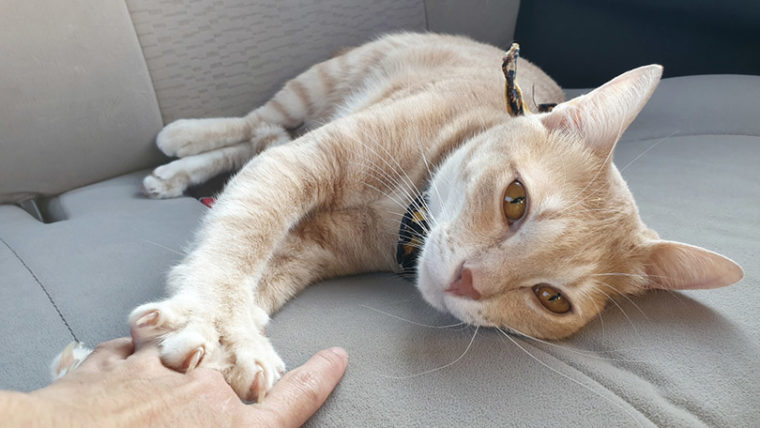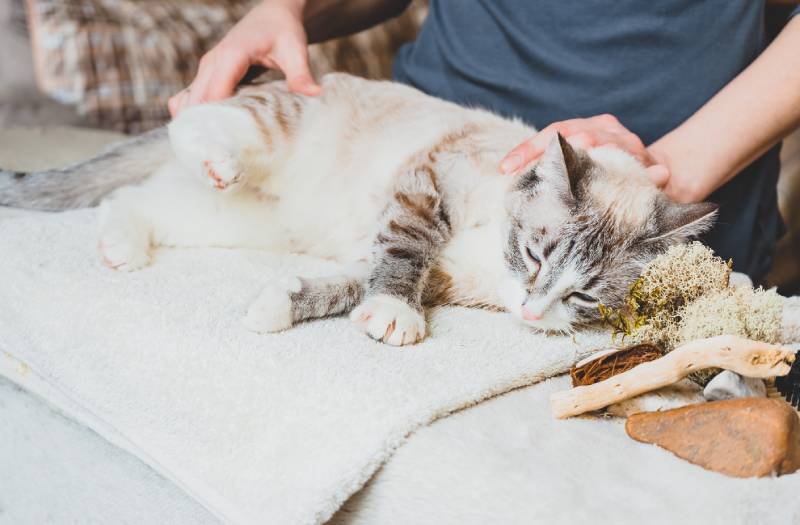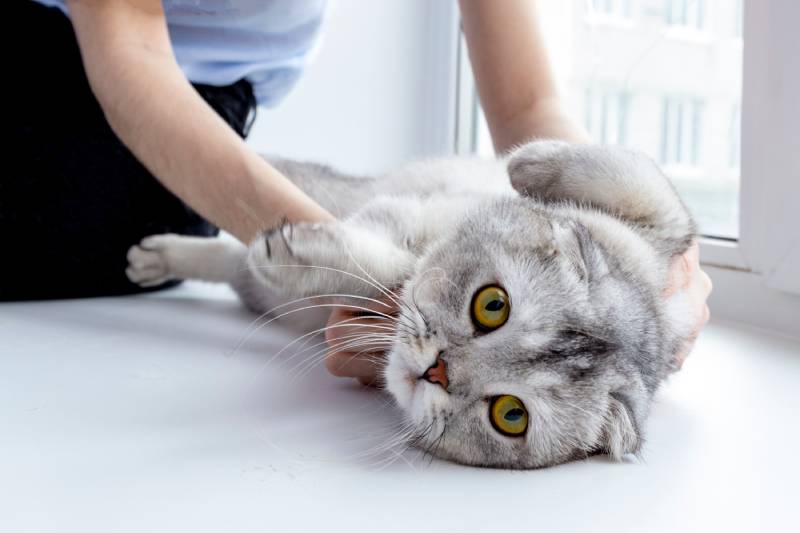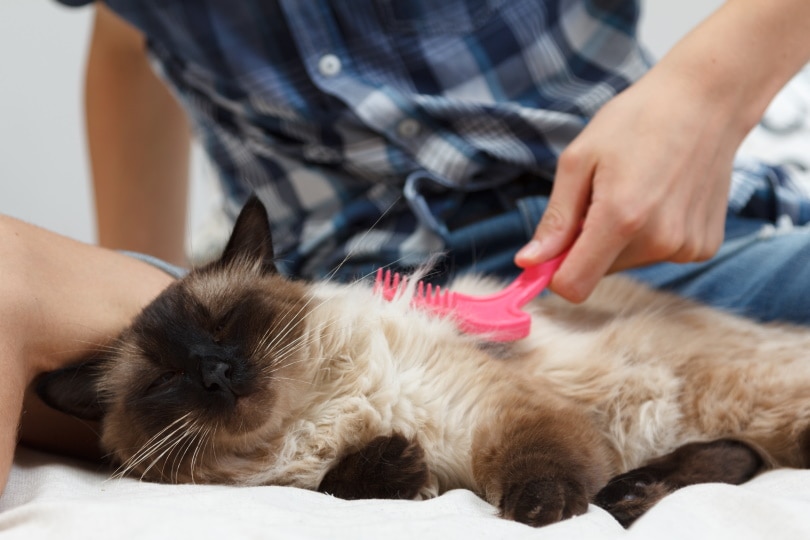
Arthritis is a progressive condition that causes the joints to degenerate and become inflamed. According to PetMD, between 70% and 90% of senior cats (over the age of 12) are likely to be affected by arthritis.
Arthritis can be quite a painful condition that affects cats’ mobility, but, if your cat has been diagnosed with arthritis, there are some steps you can take toward making them more comfortable, including gently massaging your cat to ease their discomfort.
There are right and wrong ways to go about massaging an arthritic cat—a poorly done massage can make a cat in pain or discomfort feel even worse. For this reason, we recommend checking with your vet before you massage your arthritic cat to make sure it’s the best thing for them and to get some tips on how to properly perform the massage.
We also recommend having a professional do it first so you can learn how to do it correctly. If you’re planning on massaging your cat yourself, here are some tips.
The 5 Key Considerations for Massaging an Arthritic Cat
1. Choose the Best Time and Place
You’ll want to pick a suitable time to perform your cat’s massage, like when they’re feeling relaxed and contented. If your cat is irritable due to a painful arthritic episode or some other reason, postpone the massage until they’re feeling better.
It’s also best to choose an appropriate place to carry out the massage. Go for somewhere quiet and peaceful instead of an area where there’s a lot going on.

2. Position Your Cat
Make sure your cat is in a comfortable position before you get started. Place them on your lap, the couch, or just anywhere they feel most comfortable and relaxed.
3. Focus on the Legs
Many cats with arthritis feel the condition’s effects in their leg joints and the areas surrounding them. To perform a massage in this area, start by rubbing your cat’s legs—particularly the joint areas—with gentle circular motions.

4. Gauge Your Cat’s Response
If your cat seems relaxed and comfortable, continue massaging each of the legs with the same gentle circular motions. If they show signs of discomfort, try applying less pressure. If your cat is still uncomfortable, stop the massage straight away and only begin again when your cat is ready.
5. Repeat
If the massage procedure seems to ease your cat’s pain and relax them, repeat the process as necessary. If your cat does not respond well to the massage, please consult your vet for advice—they may need another form of pain management.

Massaging Your Cat: Safety Tips
It’s important to take great care when massaging a cat to make sure they don’t end up in more pain or discomfort than before. To reiterate, this is why we recommend letting a professional do the massage at least for the first time so that you can feel confident performing it yourself in the future.
How to Help an Arthritic Cat in Other Ways
In addition to veterinary–prescribed medications and massage, there are other ways to care for your arthritic cat at home and make them more comfortable.
1. Grooming
Cats with mobility issues may have a harder time cleaning themselves, so you might need to offer a helping hand. Brush them regularly and make sure their claws are trimmed as overgrown claws can put even more pressure on arthritic cats’ feet.

2. Adapt Their Environment
Arthritic cats struggle with mobility, so climbing in and out of their litter box or bending down to reach their food bowl may not be as easy as it once was, so it’s best to put litter boxes and food and water bowls on one floor of your home to avoid the need for your cat to use the stairs.
Provide raised food bowls to prevent them from having to bend down and make sure their litter box is low enough for them to comfortably step into. Avoid letting your cat walk on slippery surfaces and always make sure they have a warm bed to retreat to.
3. Install Ramps
Since jumping and stairs become more difficult for arthritic cats, you can help them by installing ramps leading to areas they can no longer comfortably reach, like the couch or windowsill.

4. Manage Their Weight
Obesity puts extra pressure on a cat’s joints, so weight management is crucial. Weighing their food in the proportions recommended for their size is a great way to make sure your cat isn’t overeating.
5. Apply Warm Compresses
Applying a warm compress may temporarily ease pain and discomfort and reduce inflammation for an arthritic cat.
Final Thoughts
Though arthritis isn’t curable, its symptoms can be managed with vet-prescribed pain and anti-inflammatory medications, environmental changes, and home care like grooming and massage. Cat massage is always best performed by a professional, but you can certainly pick up some tips for performing basic pain-relieving massages at home.
If you suspect that your cat has arthritis or you’re considering massage as a method of pain management, please consult your vet to find out if this would be the best course of action for your cat specifically.
Featured Image Credit: RJ22, Shutterstock






